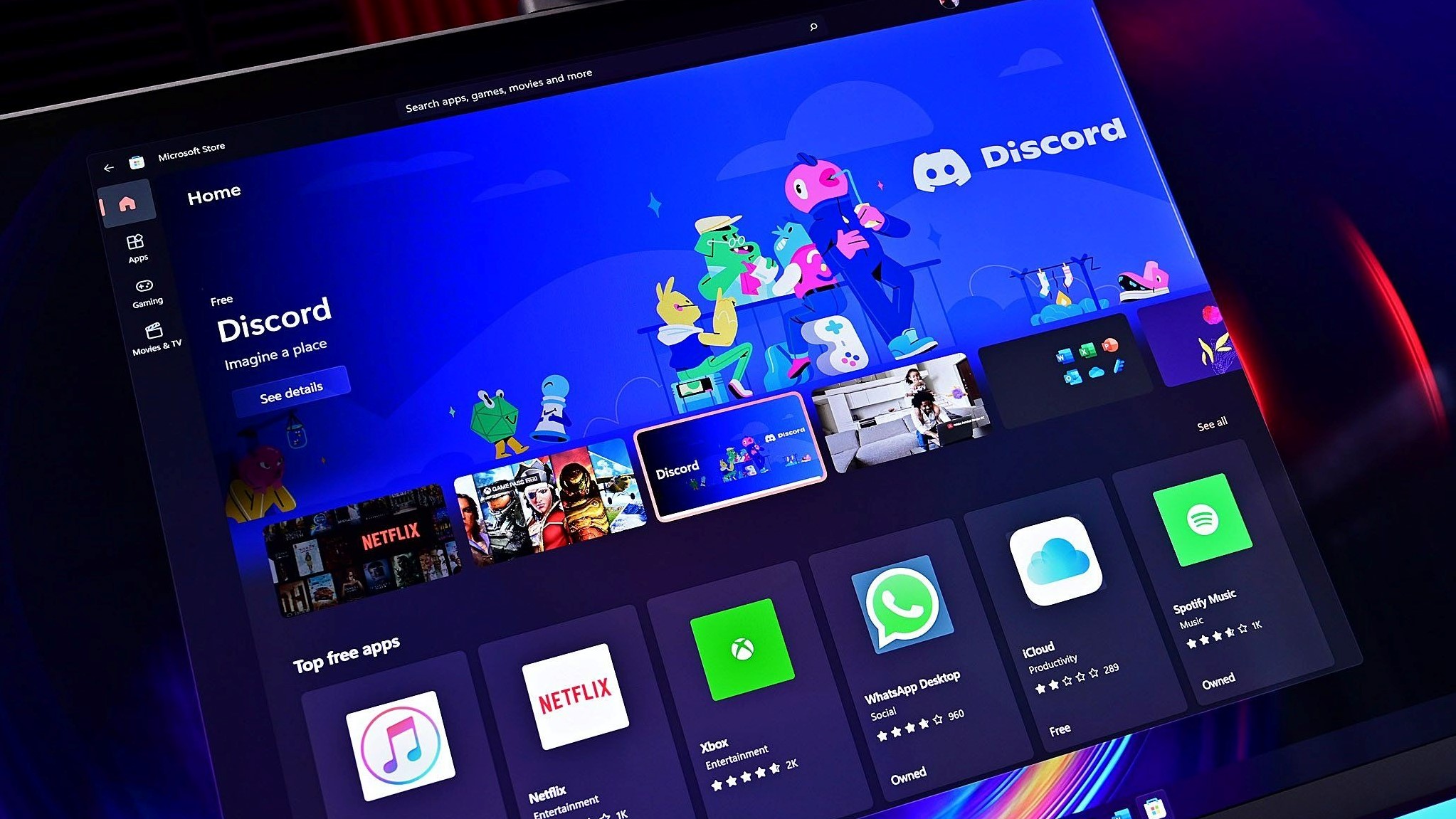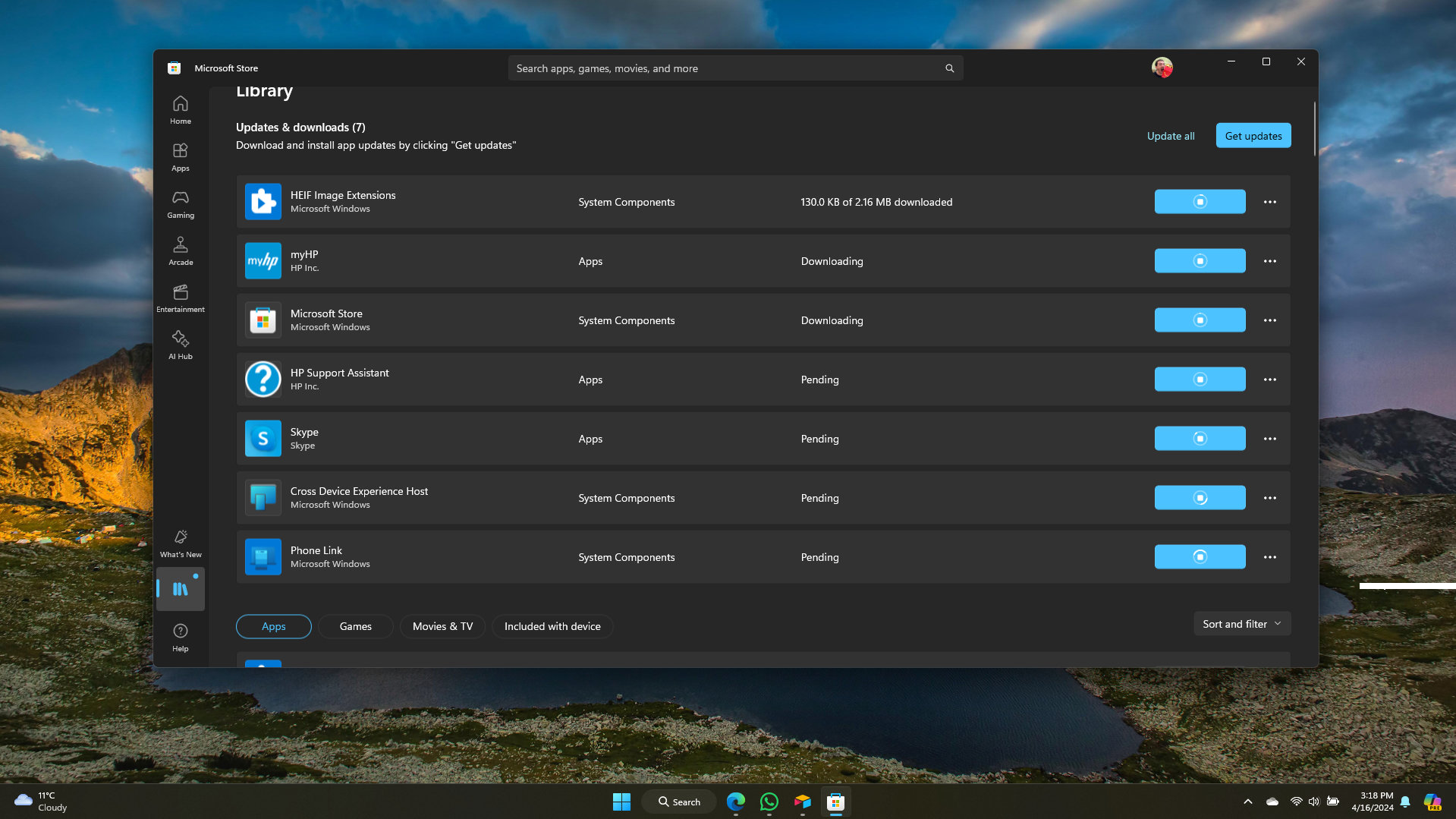Windows 11's new update system is a brutal reminder of where the Microsoft Store falls short
Windows Update orchestration platform will deliver a unified experience for app and driver updates.

Microsoft announced the "unified future for app updates on Windows" this week. The tech giant created the Windows Update orchestration platform to bring together app updates and other updates on your PC.
At the moment, apps, drivers, and other components are updated separately using different methods. This fragmented approach creates more work for IT admins and anyone who manages devices.
The current setup can also cause CPU usage spikes and other issues, which Microsoft outlines in a recent blog post.
"Updates across the Windows ecosystem can feel like a fragmented experience for IT admins managing applications that have their own update orchestrators (e.g., line of business) and commercial management tools that handle their own download, install, restart, and notifications today," said Microsoft.
"To solve this, we're building a vision for a unified, intelligent update orchestration platform capable of supporting any update (apps, drivers, etc.) to be orchestrated alongside Windows updates."
The newly announced Windows Update orchestration platform makes it possible to have app updates run through Windows Update. The platform is now in private preview.
Windows Update currently handles updates to Windows 11, some OEM updates, and certain drivers. The Windows Update orchestration platform will result in a more unified update experience for apps and drivers.
All the latest news, reviews, and guides for Windows and Xbox diehards.
The Windows Update orchestration platform also benefits developers by enabling change logs to appear directly within Windows Update.
Microsoft detailed that the new setup also allows for eco-efficient scheduling, a simplified notification experience, and admin policy support for deadlines.
Microsoft Store failings

A centralized method for app updates managed by Microsoft — hasn’t that been around for a while? The Windows Update orchestration platform looks like a genuinely useful tool for IT admins and businesses. It also highlights that Microsoft cannot convince developers to embrace the Microsoft Store.
The Microsoft Store uses Windows Update on its back end and has been around for well over a decade. These facts were also pointed out by Legacy Update on Bluesky.
Admittedly, using the Microsoft Store to manage updates has had limits, but even those have gotten looser over the years.
Late in 2024, Microsoft started testing the option to have the Microsoft Store's update system work with apps that are not hosted on the Microsoft Store's servers.
That change affected "provided and updated apps," which are listed in the Microsoft Store but sourced from the server of the app's developer.
The update turned the Microsoft Store into a "one-stop shop for all app updates on your system," as explained by our Senior Editor Zac Bowden. But it still requires apps to be within the Microsoft Store.
The Windows Update orchestration platform provides a unified experience and works with apps and components not available through the Microsoft Store.
Between improvements to the Microsoft Store, the release of Windows Package Manager, and the upcoming Windows Update orchestration platform, there is a collection of tools to get apps onto PCs. That's great for IT admins and consumers. It just feels like some of Microsoft's efforts are only needed because the tech giant cannot convince developers to embrace the Microsoft Store.

Sean Endicott is a tech journalist at Windows Central, specializing in Windows, Microsoft software, AI, and PCs. He's covered major launches, from Windows 10 and 11 to the rise of AI tools like ChatGPT. Sean's journey began with the Lumia 930, leading to strong ties with app developers. Outside writing, he coaches American football, utilizing Microsoft services to manage his team. He studied broadcast journalism at Nottingham Trent University and is active on X @SeanEndicott_ and Threads @sean_endicott_.
You must confirm your public display name before commenting
Please logout and then login again, you will then be prompted to enter your display name.
